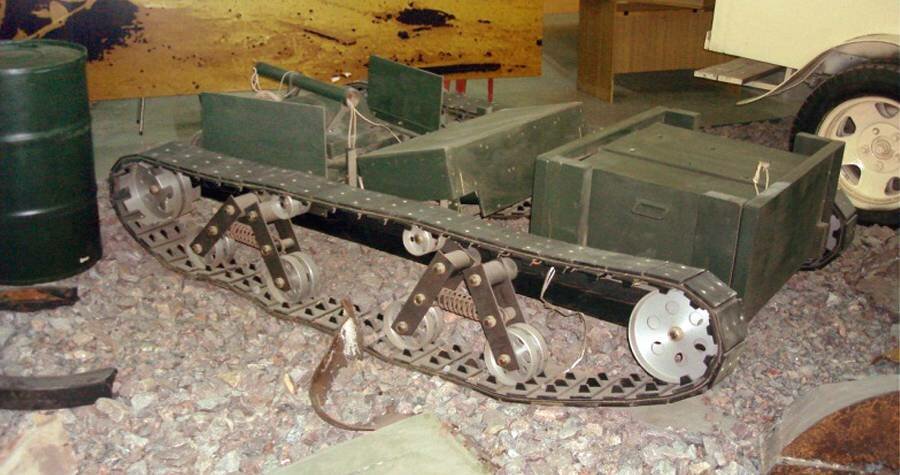In August 1941, a military engineer of the Red Army (and also a famous Soviet science fiction writer) Alexander Petrovich Kazantsev proposed the idea of a very simple self-propelled vehicle with an electric motor, remotely controlled by wire. Such an “electric tankette torpedo” could be used in urban battles, unexpectedly jumping out of yards and basements, undermining or hitting enemy equipment and manpower with flamethrowers.
According to the author himself, the idea came to him when a badly damaged GAZ-60 half-track all-terrain vehicle was delivered to the mobilization and repair point, which was in charge of Kazantsev. This car was a version of the usual "one and a half" GAZ-AA, on which the rear wheels were replaced with a caterpillar truck with a rubber-metal track. Appreciating the simplicity of the mover, Kazantsev decided that it could be adapted for disposable demolition machines - cheap and simple - and managed to captivate the rest of the staff with his idea.
The wedge prototype was assembled literally from improvised materials - for example, the motors were borrowed from electric drills, the running gear was assembled from spare parts from a tractor. The famous Soviet electrical engineer Andronik Gevondovich Iosifyan provided great assistance in the work. After successful sea trials, the prototype - equipped with a flamethrower - was presented to the state.
On tests, the tankette ran cheerfully around the training ground, overcame obstacles and successfully carried out flamethrowing for training purposes. True, at the same time (according to the author himself), due to an accidental turn during flamethrowing on the move, the tankette almost killed the commission observing the test, but such an incident, rather, inspired the officers. The situation on the fronts was difficult, the Germans were approaching Moscow. A simple and cheap weapon that could be mass-produced at numerous Moscow factories and repair shops and used in urban battles looked like an extremely promising solution. The project of "electric tankette-torpedo" was launched.
The main task of the tankette was to undermine the fortifications and military equipment of the enemy with the help of powerful explosive charges. The tankette could transport explosive charges weighing from 100 to 500 kg, thereby ensuring the effective destruction of fortifications, clearing engineering obstacles or making passages in minefields. Theoretically, the electric tankette could also be used to destroy moving enemy tanks - like a sort of caterpillar anti-tank mine.
Another use of the tankette was flamethrowing. With an infantry flamethrower installed instead of an explosive charge, the tankette could approach enemy positions and generously “irrigate” them with a blazing mixture. The work of flamethrowers was extremely dangerous - they had to get close to the enemy, carrying a tank of flammable liquid that could flare up from any accidental hit! - and the idea of \u200b\u200b"mechanizing" it, the Soviet infantry fully approved.
The project was undertaken by the Moscow Electromechanical Plant No. 627, which specialized in the production of prototypes and small-scale electrical equipment. In production, the electric tankette was named ET-1-627 (Electro Tankette / Torpedo, model 1, factory 627). It was also known as Kazantsev's land torpedo.


